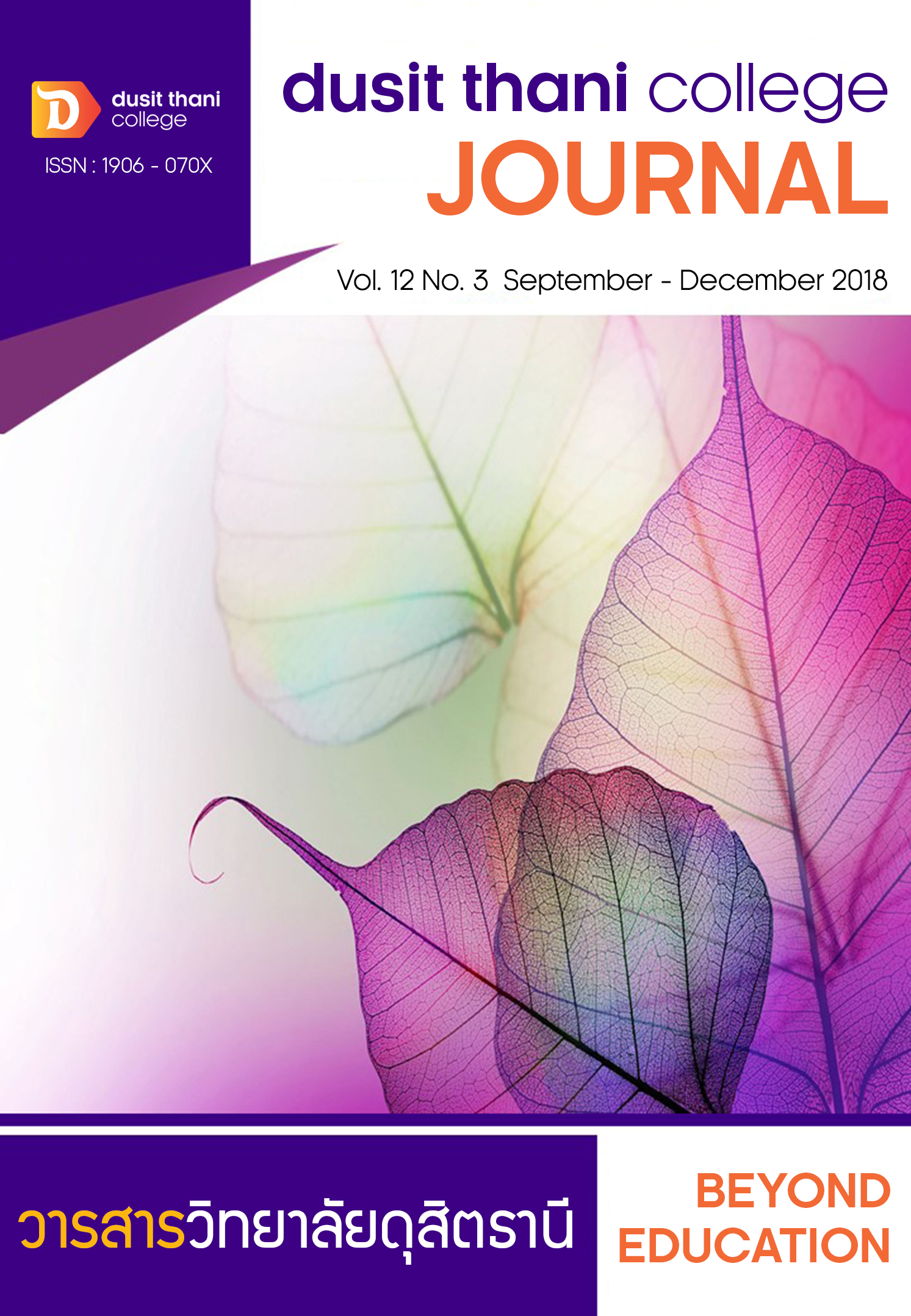Forecasting of the Number of Polish Tourists: Emerging Market Tourists Arrival in Thailand
Main Article Content
Abstract
This article aimed to forecast the number of Polish tourist arrivals in Thailand. The time series decomposition method was applied. Data used for the forecasting were quarterly tourist arrivals from the first quarter of 2013 to the fourth quarter of 2017 (20 values), gathered by the Ministry of Tourism and Sports. Results showed that the Polish tourist arrivals in Thailand were likely to be increased by the influence of trends and seasonality. The highest number of Polish tourist arrivals in Thailand was in the first quarter (58.24% higher than normal) and the fourth quarter (33.47% higher than normal). The lowest number of Polish tourist arrivals in Thailand was in the third quarter (47.85% lower than normal) and the second quarter (43.86% lower than normal). The forecast model was found to be extremely accurate with the mean absolute percentage error of 5.46% (MAPE = 5.46%)
Article Details
Article Screening Policy
- All research and academic articles to be published must be considered and screened by three peer reviews in the relevant field / article.
- All articles, texts, illustrations and tables published in the journal are the personal opinions of the authors. Editors don't always have to agree. And no responsibility whatsoever is the sole responsibility of the author.
- The articles to be published must never be published. Where did you first publish? And not in the consideration of other journals If the audit found that there has been a duplicate publication It is the sole responsibility of the author.
- Any article that the reader sees as being plagiarized or impersonated without reference. Or mislead the work of the author Please let the journal editor know it will be your greatest blessing.
References
2. Bureau of Economic Research and Processing. Excellent Business Management Co., Ltd. (2011). The Survey of Attitude and Behavior of Foreign Tourists Phase 2 (Eastern Europe). Excellent Business Management Co., Ltd.: Bangkok.
3. Economics Division, Ministry of Tourism and Sports. (2018, June 1). Tourist Statistics. Retrieved from https://www.mots.go.th/more_news.php?cid=411
4. Ekachidd Chungcharoen. (2017). Business Forecasting. Bangkok: Thammasat University Press.
5. Gong, X., Sriboonchitta, S., & Kuson, S. (2016). Forecasting the Chinese Tourist Arrivals to Thailand the Time Series Approach. The Social Sciences, 11(9), 4617-4621.
6. Kulendran, N., & King, M. L. (1997). Forecasting International Quarterly Tourist Flows Using Error-correction and Time-series Models. International Journal of Forecasting, 13(3), 319 - 327.
7. Ma, E., Liu, Y., Li, J., & Chen, S. (2016). Anticipating Chinese Tourists Arrivals in Australia: A Time Series Analysis. Tourism Management Perspectives, 17, 50-58.
8. Mastercard. (2018, June 1). Defining What Makes a City a Destination. Retrieved from https://newsroom.mastercard.com/press-releases/defining-what-makes-a-city-a-destination/
9. Ministry of Tourism and Sports. (2018, May 10). National Tourism Strategy 2015 - 2017. Retrieved from http://www.mots.go.th/ewt_dl_link.php?nid=7114
10. Nitinai Rungjindarat & Nalinee Phansaita. (2016). Forecasting Russian Tourist Arrivals to Thailand Using SARIMA Model. Dusit Thani College Journal, 10(1), 180-191.
11. Sirilak Suwanwongse. (1992). Time Series Analysis. Bangkok: Suwiriyasan Publishing.
12. Tourism Authority of Thailand. (2018). Getting to Know the Emerging Market: Poland.
TAT Review Magazine, 4(2), 22-27.
13. Vichit Lorchirachoonkul & Jirawan Jitthavech. (2005). Forecasting Techniques. 3rd ed.
National Institute of Development Administration. Bangkok.
14. Warangkhana Keerativibool. (2013). Forecasting Model for the Number of International Tourist Arrivals to Thailand. Srinakharinwirot Science Journal, 29(2), 9-26.


